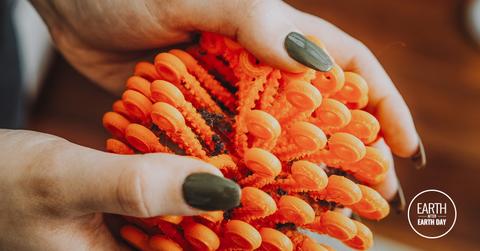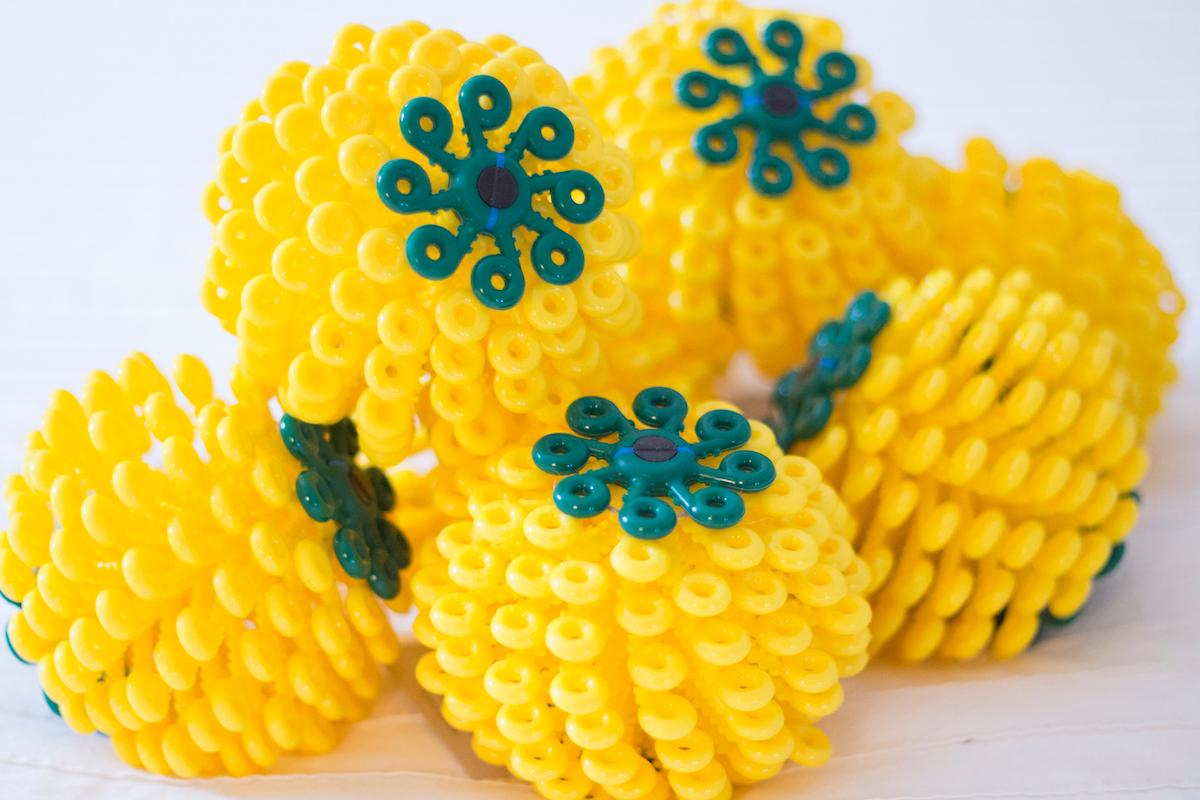What Are Microfibers? Here's What You Can Do to Avoid Them
A garment can produce 1,900 microfibers in just one wash cycle.
Updated May 24 2019, 2:36 p.m. ET

As if statistics about the fast fashion industry weren't horrifying enough, microfibers had to come along and make us feel bad about wearing synthetic fabrics — even if they were purchased secondhand or made from recycled plastic. Essentially, microfibers are a form of microplastics that our synthetic clothing releases every time we do laundry. Here's everything you need to know about microfibers, how they impact the planet, and how to reduce the amount that you produce. (It's not as complicated as it sounds, promise.)
A microfiber is defined as a synthetic fiber (aka one that is derived from petroleum) that is extremely small in diameter. The term is used to describe two distinctly different things: microfiber fabric and microfibers that are pollutants. Microfiber fabric, also known as microsuede fabric, is made up of fibers that are approximately 1/100th the diameter of a human hair, meaning approximately 200,000 fibers are needed to comprise one square inch of fabric, according to Microfiber Wholesale. Microfiber fabrics are excellent at things like picking up dirt, absorbing liquid, and removing makeup.
However, the kind of microfiber that we are going to focus on is a little different — and that is microfibers as pollutants. As explained by the Marine Debris Program, microfibers are teeny-tiny particles of synthetic fabrics that come off of our clothing while it's in the washing machine, making them a type of microplastic. The minuscule fibers travel through water pipes and enter oceans and rivers, where they are often consumed by sea animals and pollute the water. Eating plastic can kill marine life; not to mention, humans often drink water polluted with microplastics and eat fish who have microplastics in their bodies. Tiny bits of plastic are not my ideal side dish.
According to a study published by the journal Environmental Science & Technology, and as reported by the BBC, researchers found that one item of clothing can produce more than 1,900 microfibers in just one wash cycle. And considering the fact that about 60 percent of clothing globally is made up of synthetic materials (which include polyester, nylon, and spandex), as Vox noted, it's safe to say that most of us are letting thousands of microfibers into oceans and rivers on a weekly basis. (Or, every three weeks, if your laundry habits are as bad as mine.)
Luckily, there are a few ways to prevent your laundry from sending microfibers into the water supply. One is by investing in a device that will catch microfibers in your washing machine, preventing many of them from being flushed out of the machine with water. One popular option is the Cora Ball, a hive-like ball made of recycled plastic that you put directly in the washing machine with your clothing. A study found that Cora Ball captures around 26 percent of microfibers, preventing them from entering the water supply, Cora Ball explained on its website. Once you can see fibers tangled in the ball, you can remove them by hand.

Another option is the Guppyfriend washing bag. According to Phys.org, a German research institute found that when using a Guppyfriend, fabrics actually shed 75 to 86 percent less fibers. To use the Guppyfriend, you'll need to sort out your clothing that is made from synthetic materials and put them in the large bag, which is similar to a lingerie washing bag, but with tighter woven fabric. As Guppyfriend explains in its FAQs via the blog Fair For All Guide, the seams and corners of the bag will accumulate synthetic fibers over time. Once a visible cluster of microfibers forms, scrape it off.
Unfortunately, microfibers collected from both the Cora Ball and the Guppyfriend must be thrown in the trash and sent to landfill — not an ideal option, but of course much better than sending them into our waterways. You can scrape the microfibers into a water bottle or container before placing it in the garbage to make sure the fibers do not escape.
If investing in a Cora Ball or a Guppyfriend is not an option for you at the moment, there are plenty of other things you can do to reduce the amount of microfibers you release. The website Plastic Pollution Coalition suggests: filling up your washing machine as much as possible, because a full load means less friction and less microfibers shed; washing with cold water, as hot water can release more microfibers; washing your clothing less often; and opting for clothing made from natural materials over synthetics whenever possible.